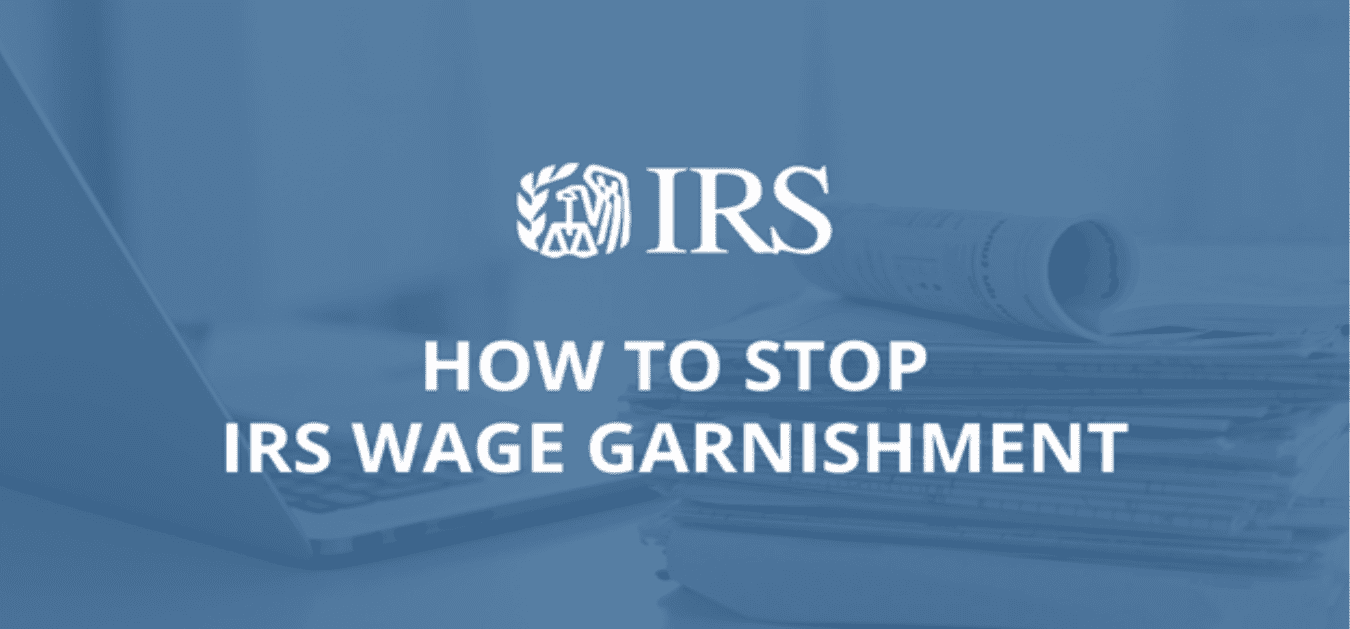Home>Finance>How To Stop Getting Credit Card Applications In The Mail


Finance
How To Stop Getting Credit Card Applications In The Mail
Published: October 25, 2023
Learn how to stop receiving credit card applications in the mail and take control of your finances.
(Many of the links in this article redirect to a specific reviewed product. Your purchase of these products through affiliate links helps to generate commission for LiveWell, at no extra cost. Learn more)
Table of Contents
- Introduction
- Why Credit Card Applications are Sent in the Mail
- The Impact of Credit Card Applications
- The Importance of Stopping Credit Card Applications
- Strategies to Opt Out of Credit Card Mailings
- Method 1: Opt-Out by Phone
- Method 2: Opt-Out Online
- Method 3: Send a Written Request
- Method 4: Utilize Credit Reporting Agencies
- Method 5: Register with Direct Marketing Association
- Method 6: Freeze Your Credit
- Additional Tips for Minimizing Credit Card Mailings
- Conclusion
Introduction
Are you tired of constantly receiving credit card applications in the mail? Do you find it annoying to sift through the plethora of offers that clutter your mailbox? You’re not alone. Many people are bombarded with credit card solicitations on a daily basis, and it can be overwhelming.
Credit card companies use direct mail as a marketing strategy to attract new customers. They send out these pre-approved applications in the hopes that consumers will succumb to the temptation and sign up for their credit cards. While some people may find these offers enticing, others may view them as junk mail that only adds to the paper trail cluttering their homes.
The constant arrival of credit card applications in the mail can have a significant impact on the state of your finances. The temptation to open new credit accounts can lead to overspending and accumulating debt. Additionally, the more credit card applications you receive, the higher the chances of your personal information falling into the wrong hands, increasing the risk of identity theft.
Stopping credit card applications from flooding your mailbox is crucial for several reasons. It not only reduces the risk of financial mismanagement but also helps protect your personal information. By taking proactive steps to limit credit card solicitations, you can regain control of your personal finances and enjoy a clutter-free mailbox.
Why Credit Card Applications are Sent in the Mail
Credit card companies rely on direct mail as an effective marketing strategy for several reasons. Sending credit card applications via traditional mail allows them to reach a large audience and target specific demographics. While digital marketing has gained popularity in recent years, direct mail remains a key channel for credit card issuers to acquire new customers.
One reason credit card applications are sent in the mail is that it allows companies to personalize their offers. By analyzing consumer data and credit scores, credit card issuers can tailor their pitches to specific individuals. They can offer customized interest rates, rewards programs, and promotional offers based on the recipient’s financial profile. This personalization helps increase the chances of attracting new customers who are more likely to respond positively to the offer.
Furthermore, credit card companies understand that physical mail has a higher chance of being noticed compared to emails or online advertisements. With the rise of spam filters and ad-blockers, email marketing has become less effective. In contrast, credit card applications sent by mail have a greater chance of capturing the recipient’s attention. Holding a physical credit card application in their hands makes it more tangible and difficult to ignore.
Credit card companies also take advantage of the psychology behind direct mail. The act of physically opening an envelope and seeing a pre-approved credit card offer enhances the appeal and immediacy of the offer. It taps into our subconscious desire for instant gratification and the fear of missing out (FOMO). This powerful combination can result in individuals impulsively accepting credit card offers without thoroughly considering the terms and conditions.
It is important to note that credit card applications are also a result of partnerships between credit card companies and other organizations. For example, banks offer credit cards through partnerships with airlines, hotels, and retail stores, allowing consumers to earn rewards or discounts specific to those brands. These partnerships expand the reach of credit card applications and increase their distribution through various channels, including direct mail.
Understanding why credit card applications are sent in the mail is essential in order to take effective measures to stop them from cluttering your mailbox. In the following sections, we will explore strategies to opt out of credit card mailings and regain control over your personal finances.
The Impact of Credit Card Applications
Receiving an influx of credit card applications in the mail can have a significant impact on your financial well-being. It’s important to understand the potential consequences and take proactive measures to manage these solicitations effectively.
1. Financial Temptation: The constant arrival of credit card applications can be tempting, especially if they offer enticing rewards, low introductory rates, or exclusive perks. It’s easy to succumb to the allure of these offers and end up with multiple credit cards. However, having too many credit cards can lead to financial mismanagement, overspending, and accumulating debt that becomes difficult to repay.
2. Identity Theft Risk: The increase in credit card applications also raises the risk of identity theft. These applications often contain personal and financial information that, if intercepted by malicious individuals, can lead to fraudulent activities and unauthorized account openings. Protecting your personal information is crucial in preventing identity theft and its far-reaching consequences.
3. Credit Score Impact: Each time you apply for a credit card, a hard inquiry is made on your credit report. Multiple hard inquiries within a short period can negatively impact your credit score. It signals to lenders that you are seeking new credit and may be financially stretched. A lower credit score can make it harder to qualify for favorable loans, mortgages, or even future credit card applications.
4. Clutter and Waste: Credit card applications contribute to unnecessary clutter and waste. They can quickly pile up, cluttering your home and creating a disorganized living space. Moreover, these applications often come with envelopes, inserts, and promotional materials that further add to the environmental burden.
Given the potential negative impact of credit card applications, it’s crucial to take steps to mitigate their effects. By opting out of these mailings and controlling the number of credit cards you have, you can protect your financial health and reduce unnecessary clutter in your life. In the following sections, we will explore effective strategies to stop credit card applications from inundating your mailbox.
The Importance of Stopping Credit Card Applications
Stopping credit card applications from flooding your mailbox is not just a matter of convenience; it is essential for your financial well-being and personal security. Understanding the importance of putting a halt to these solicitations can motivate you to take immediate action. Here are key reasons why stopping credit card applications is crucial:
1. Financial Control: Limiting the number of credit card applications you receive allows you to regain control over your finances. It prevents you from being constantly tempted by new credit card offers, reducing the chances of overspending and accumulating debt. By carefully selecting and managing your credit cards, you can maintain a healthy credit utilization ratio and improve your overall financial stability.
2. Protection against Identity Theft: Credit card applications often require sensitive personal and financial information. The more applications you receive, the greater the risk of identity theft. By reducing the number of credit card applications in your mailbox, you lower the chances of your personal information falling into the wrong hands. This helps protect your identity and safeguards you from the potential financial and emotional consequences of identity theft.
3. Streamlined Finances: Constantly receiving credit card applications can make it challenging to keep track of your existing credit cards and their associated terms, such as interest rates, fees, and rewards programs. By reducing the influx of new applications, you can focus on managing your existing credit cards effectively, ensuring that you maximize their benefits and avoid any unnecessary fees or penalties.
4. Environmental Impact: Credit card applications contribute to paper waste and environmental degradation. The production, transportation, and disposal of these applications have a significant carbon footprint. By actively opting out of credit card mailings, you are making a positive environmental impact by reducing paper consumption and waste generation.
By recognizing the importance of stopping credit card applications, you can take the necessary steps to regain control of your financial life and protect your personal information. In the following sections, we will explore various strategies to opt out of credit card mailings and minimize their impact on your daily life.
Strategies to Opt Out of Credit Card Mailings
If you’re tired of receiving credit card applications in the mail, there are several effective strategies you can employ to opt out of these mailings. By taking proactive steps, you can minimize the influx of credit card solicitations and regain control over your mailbox. Here are some useful strategies to consider:
1. Method 1: Opt-Out by Phone: Contact the credit reporting agencies directly and request to opt out of pre-screened credit offers. This will remove your name from the lists that credit card companies use to send out targeted applications. You can reach Equifax, Experian, and TransUnion by phone and provide the necessary information to opt out. Make sure to follow the prompts and instructions provided to complete the process successfully.
2. Method 2: Opt-Out Online: Another convenient way to stop credit card mailings is by using the online opt-out services provided by the credit reporting agencies. Visit the websites of Equifax, Experian, and TransUnion, and look for the section related to opt-out services. Fill out the necessary forms and provide the required information to opt out of pre-screened credit offers. It typically takes a few minutes to complete the process, and it can significantly reduce credit card applications received in the mail.
3. Method 3: Send a Written Request: If you prefer written communication, you can send a request by mail to the credit reporting agencies. Write a letter stating your intention to opt out of credit card solicitations and include your name, address, Social Security number, and date of birth. Send the letter to each of the credit reporting agencies’ opt-out addresses. Ensure that you keep a copy of the letter for your records and send it via certified mail with a return receipt to track its delivery.
4. Method 4: Utilize Credit Reporting Agencies: In addition to opting out directly with the credit reporting agencies, you can also employ their services to manage your credit reports. By freezing your credit or setting up fraud alerts, you can add an extra layer of protection against unauthorized credit card applications. Freezing your credit prevents anyone, including yourself, from opening new credit accounts until you lift the freeze. Fraud alerts, on the other hand, notify potential lenders to verify your identity before processing any credit applications.
5. Method 5: Register with Direct Marketing Association: The Direct Marketing Association (DMA) offers a service called the DMAChoice program, which allows you to manage the marketing materials you receive. By registering with DMAChoice, you can opt out of credit card mailings and other unwanted direct mail offers. Visit the DMA website and follow the instructions for opting out of specific mailings. Keep in mind that this opt-out service may take some time to take effect, so be patient while the changes are implemented.
6. Method 6: Freeze Your Credit: Freezing your credit is a highly effective way to halt credit card applications and protect your financial information. By placing a freeze on your credit reports, you are essentially blocking new credit applications from being processed. This means that even if someone obtains your personal information, they won’t be able to open new credit accounts in your name. However, it is important to note that freezing your credit requires thorough consideration, as it can also restrict your ability to apply for new credit when needed.
By employing one or more of these strategies, you can significantly reduce the number of credit card applications cluttering your mailbox. Take the necessary steps to opt out of credit card mailings and regain control over your mailbox and financial information.
Method 1: Opt-Out by Phone
One of the most straightforward ways to stop receiving credit card applications in the mail is to opt out by phone. By contacting the credit reporting agencies directly, you can request to be removed from the lists that credit card companies use to send out pre-screened offers. Here’s how you can opt out by phone:
- Collect the necessary information: Before making the call, gather your personal information, including your full name, address, Social Security number, and date of birth. Having this information readily available will expedite the process.
- Identify the credit reporting agencies: There are three major credit reporting agencies – Equifax, Experian, and TransUnion. You will need to contact each of these agencies individually to opt out of credit card solicitations.
- Call the credit reporting agencies: Use the phone numbers provided by the credit reporting agencies to reach their opt-out departments. Follow the prompts and instructions provided to speak with a representative who can assist you in the opt-out process.
- Provide the necessary information: Once connected with a representative, provide all the required information, such as your name, address, Social Security number, and date of birth. This ensures that your preferences are accurately recorded and that you are removed from the lists used for sending credit card applications.
- Follow any additional instructions: The representative may provide you with additional information, such as a confirmation number or other steps you need to take to complete the opt-out process. Make sure to carefully follow their instructions to ensure your request is properly processed.
- Keep a record: It’s important to keep a record of your phone call, including the date, time, the name of the representative you spoke with, and any reference numbers provided. This can be useful if any issues arise in the future or if you need to follow up on your opt-out request.
Opting out by phone allows you to directly communicate your request to the credit reporting agencies. It is a convenient and efficient method to get your name removed from the pre-screened credit offer lists, reducing the number of credit card applications you receive in the mail. Be sure to opt out with each agency independently to ensure comprehensive coverage and maximize the effectiveness of your request.
Remember, the opt-out process may take some time to take effect, as credit card companies typically plan their mailings in advance. So, it’s important to be patient while the changes are implemented. Additionally, keep in mind that opting out by phone only applies to pre-screened credit card offers and does not stop other types of unsolicited mailings. In the next section, we will explore how you can opt out of credit card mailings online.
Method 2: Opt-Out Online
Opting out of credit card mailings online is a convenient and efficient method to reduce the number of credit card applications you receive in your mailbox. It allows you to easily request to be removed from the pre-screened credit offer lists used by credit card companies. Here’s how you can opt out online:
- Visit the websites of the credit reporting agencies: Start by visiting the websites of Equifax, Experian, and TransUnion – the major credit reporting agencies.
- Look for the opt-out section: Check for “opt-out” or “pre-screened offers” sections on each website. These sections are specifically designed to handle requests to opt out of credit card mailings.
- Fill out the necessary forms: Once you have located the opt-out section, you will likely be required to fill out online forms. Provide all the required information, including your name, address, Social Security number, and date of birth. This ensures that your opt-out request is properly processed.
- Submit your request: After filling out the necessary forms, submit your opt-out request. Pay attention to any confirmation messages or references provided on the website. These can serve as proof that your request has been successfully submitted.
- Keep a record: It’s important to keep a record of your online opt-out process. Take screenshots or save confirmation emails as evidence of your request. This documentation can be helpful if any issues arise or if you need to follow up on your opt-out status in the future.
Opting out online allows you to quickly and easily request to be removed from credit card mailing lists. By doing so, you can significantly reduce the number of credit card applications received in the mail. It’s important to note that it may take some time for the changes to take effect, as credit card companies plan their mailings in advance.
Additionally, keep in mind that opting out online only applies to pre-screened credit card offers and may not stop other types of unsolicited mailings. However, taking this step can go a long way in reducing the amount of credit card-related mail cluttering your mailbox. In the next section, we will explore another method to stop credit card mailings: sending a written request.
Method 3: Send a Written Request
If you prefer written communication, you can opt out of credit card mailings by sending a written request to the credit reporting agencies. This method allows you to provide a physical document outlining your request to be removed from pre-screened credit offer lists. Here’s how you can opt out by sending a written request:
- Prepare your written request: Start by drafting a letter stating your intention to opt out of credit card solicitations. Include your name, address, Social Security number, and date of birth in the letter. Clearly state that you want to be removed from the pre-screened credit offer lists used by credit card companies.
- Address the letter: Address the letter to each of the three major credit reporting agencies – Equifax, Experian, and TransUnion. Check their respective websites for the correct mailing addresses to ensure that your letter reaches the appropriate department.
- Send the letter: Once you have written the letter and addressed the envelope, send it via certified mail with a return receipt requested. This way, you can track the delivery of your letter and have proof that it was received by the credit reporting agencies.
- Keep a copy: It’s important to keep a copy of your letter for your records. This copy can serve as evidence of your request and can be useful if you need to follow up on your opt-out status in the future.
Sending a written request allows you to formalize your opt-out request and provides a physical document that clearly states your intentions. It ensures that your request is documented and can be easily referenced if needed. However, note that the opt-out process may take some time to take effect, as credit card companies usually plan their mailings in advance.
While opting out by sending a written request is an effective way to reduce credit card mailings, be aware that it may not stop all unsolicited mailings. Other organizations or companies may still send you credit card offers. In the next section, we will explore an additional method to minimize credit card mailings by utilizing credit reporting agencies.
Method 4: Utilize Credit Reporting Agencies
In addition to directly opting out of credit card mailings, you can utilize the services provided by credit reporting agencies to manage your credit reports. These services offer additional layers of protection against unauthorized credit card applications. By freezing your credit or setting up fraud alerts, you can further minimize the chances of receiving unsolicited credit card offers. Here’s how you can utilize credit reporting agencies to manage credit card mailings:
1. Freeze Your Credit: Freezing your credit is an effective way to prevent anyone, including yourself, from opening new credit accounts. By requesting a credit freeze, you are essentially blocking access to your credit reports. This means that even if someone obtains your personal information, they won’t be able to open new credit accounts in your name without your consent. Contact each of the credit reporting agencies – Equifax, Experian, and TransUnion – to request a credit freeze. Keep in mind that freezing your credit may incur a small fee and may temporarily restrict your ability to apply for new credit until you lift the freeze.
2. Set Up Fraud Alerts: Another useful measure is to set up fraud alerts on your credit reports. Fraud alerts notify potential lenders that they need to take extra precautions to verify your identity before processing any credit applications. By setting up a fraud alert, you can add an added layer of protection against unauthorized credit card applications. Contact each of the credit reporting agencies to set up fraud alerts on your credit reports. They will then notify the other agencies, ensuring comprehensive coverage.
Utilizing credit reporting agency services allows you to proactively protect your credit and minimize credit card mailings. By freezing your credit and setting up fraud alerts, you add an extra level of security against unauthorized credit applications. However, keep in mind that while these measures can significantly reduce pre-screened offers, they may not stop all types of unsolicited credit card mailings.
It’s important to note that freezing your credit requires careful consideration, as it can restrict your ability to apply for new credit when needed. Therefore, assess the potential impact and weigh the pros and cons before deciding to freeze your credit. In the next section, we will explore an additional option to reduce credit card mailings by registering with the Direct Marketing Association.
Method 5: Register with Direct Marketing Association
Registering with the Direct Marketing Association (DMA) is an effective way to minimize credit card mailings and other unwanted direct mail offers. The DMA offers a service called the DMAChoice program, which allows you to manage the marketing materials you receive. By registering with DMAChoice, you can opt out of credit card mailings and take control over what types of mail you receive. Here’s how you can register with the Direct Marketing Association:
- Visit the DMA website: Start by visiting the website of the Direct Marketing Association.
- Find the opt-out section: Look for the DMAChoice program or the opt-out section on their website. This is where you can customize your mail preferences and opt out of credit card mailings.
- Provide your information: Fill out the necessary forms, including your name, address, and other relevant information. This ensures that your mailing preferences are accurately recorded.
- Choose your preferences: Select the types of mailings you want to opt out of, including credit card offers. The DMAChoice program allows you to customize your preferences and specify which mailings you no longer wish to receive.
- Submit your request: Once you have made your selections, submit your opt-out request. Take note of any confirmation messages or reference numbers provided on the website. This can serve as proof that your request has been successfully submitted.
Registering with the Direct Marketing Association through the DMAChoice program gives you greater control over the type of mail you receive, including credit card offers. By opting out of credit card mailings, you can significantly reduce the number of credit card applications cluttering your mailbox. However, keep in mind that it may take some time for the changes to take effect, as it can take a few months for the opt-out requests to be processed and implemented.
While registering with the DMA can help minimize credit card mailings, it may not stop all types of unsolicited mailings. Some credit card issuers may not be part of the DMA or may not adhere to the opt-out requests. In the next section, we will explore an additional option to minimize credit card mailings by freezing your credit.
Method 6: Freeze Your Credit
Freezing your credit is a highly effective method to stop credit card applications and protect your financial information. By placing a credit freeze, you essentially block access to your credit reports, making it difficult for unauthorized individuals to open new credit accounts in your name. Here’s how you can freeze your credit to minimize credit card mailings:
- Gather the necessary information: Before initiating a credit freeze, gather your personal information, including your full name, address, Social Security number, and date of birth.
- Contact the credit reporting agencies: Reach out to each of the three major credit reporting agencies – Equifax, Experian, and TransUnion. You can contact them either online or by phone to request a credit freeze.
- Follow the specific instructions: Each credit reporting agency may have different procedures for initiating a credit freeze. Visit their respective websites or call their customer service lines to understand the specific steps you need to take.
- Provide the required documentation: The credit reporting agency may ask for certain documents to verify your identity. Be prepared to provide the necessary documentation, such as a copy of your government-issued ID, proof of address, and any other documents they request.
- Paying any applicable fees: Depending on your location and circumstances, freezing your credit may incur a small fee. Check with each credit reporting agency to understand their fee structure and payment options.
- Receive the confirmation: After successfully initiating a credit freeze with each credit reporting agency, make sure to receive confirmation that the freeze has been placed on your credit reports. This confirmation can serve as proof of your credit freeze status if needed in the future.
It’s important to note that a credit freeze restricts access to your credit reports, including credit card issuers. This means that even if someone has your personal information, they will not be able to open new credit accounts in your name without your permission. However, it is important to consider that a credit freeze also restricts your ability to apply for new credit, such as loans or credit cards, until you lift the freeze.
While freezing your credit is an effective method to stop credit card applications, it may not entirely eliminate all types of unsolicited mailings. Other organizations or companies may still send you promotional materials. However, freezing your credit provides a strong layer of protection against unauthorized credit applications and significantly minimizes the risk of identity theft.
By utilizing this method, you can regain control over your personal information, stop credit card applications, and ensure the security of your financial profile. It is advisable to carefully weigh the benefits and potential limitations before deciding to freeze your credit.
Additional Tips for Minimizing Credit Card Mailings
In addition to the methods mentioned earlier, there are several additional tips you can follow to further minimize credit card mailings and maintain control over your mailbox. These tips can help reduce the influx of unnecessary credit card applications and promotional offers. Here are some additional strategies to consider:
- Opt for electronic statements: Many credit card issuers now offer the option to receive electronic statements instead of paper statements. By choosing electronic statements, you can reduce the amount of physical mail you receive, including credit card offers and promotional materials.
- Unsubscribe from mailing lists: Take the time to unsubscribe from mailing lists that you no longer wish to receive mailings from. Some credit card applications may be the result of being on mailing lists of companies or organizations you have previously interacted with. By unsubscribing, you can minimize the chances of receiving credit card offers through those channels.
- Monitor your credit reports: Regularly monitor your credit reports to stay informed about any new credit accounts that may have been opened in your name. By keeping a vigilant eye on your credit reports, you can identify any unauthorized activity promptly and take immediate action.
- Update your preferences with financial institutions: Contact your bank, credit union, and other financial institutions you have accounts with to update your mailing preferences. Request that they refrain from sending you credit card offers and promotional materials unless explicitly requested.
- Be cautious with sharing personal information: Avoid sharing your personal information unnecessarily, especially in response to unsolicited requests. Be cautious when providing your information online, over the phone, or through mail. Limit the sharing of personal details to trusted and reputable sources.
- Dispose of mail securely: When disposing of mail that contains personal or financial information, make sure to shred it first. This helps prevent identity thieves from accessing your sensitive data from discarded mail.
By implementing these additional tips, you can further reduce the volume of credit card mailings you receive and minimize the risk of unauthorized credit applications. Remember that maintaining control over your mailbox is crucial for protecting your financial well-being and personal information.
It’s important to note that while these tips can significantly reduce credit card mailings, it may not completely eliminate all unsolicited offers. Some credit card issuers may still send you mailings based on your existing relationship or other factors. However, by combining these strategies with the methods mentioned earlier, you can take a proactive approach to manage the credit card mailings you receive.
Conclusion
Being inundated with credit card applications in your mailbox can be overwhelming and lead to potential financial pitfalls. However, by taking proactive steps to minimize these mailings, you can regain control over your financial well-being and personal information. This article has provided you with several effective strategies to opt out of credit card mailings and reduce the clutter in your mailbox.
Methods such as opting out by phone or online, sending a written request, utilizing credit reporting agencies, registering with the Direct Marketing Association, and freezing your credit can significantly reduce the number of credit card applications you receive. These strategies not only minimize the temptation to open new credit accounts but also help protect your personal information and reduce the risk of identity theft.
In addition to these opt-out methods, implementing additional tips such as opting for electronic statements, unsubscribing from mailing lists, monitoring credit reports, updating preferences with financial institutions, being cautious with personal information, and securely disposing of mail can further minimize credit card mailings.
Remember, it may take time for these opt-out requests to take effect, as credit card companies plan their mailings in advance. Patience is key. Stay vigilant and monitor your mailbox regularly to ensure that the credit card mailings decrease over time.
By actively managing credit card mailings, you can regain control over your financial life, reduce clutter, and protect yourself from potential financial and identity-related risks. Take the necessary steps to minimize credit card mailings and enjoy a clutter-free mailbox that reflects your financial goals and priorities.














